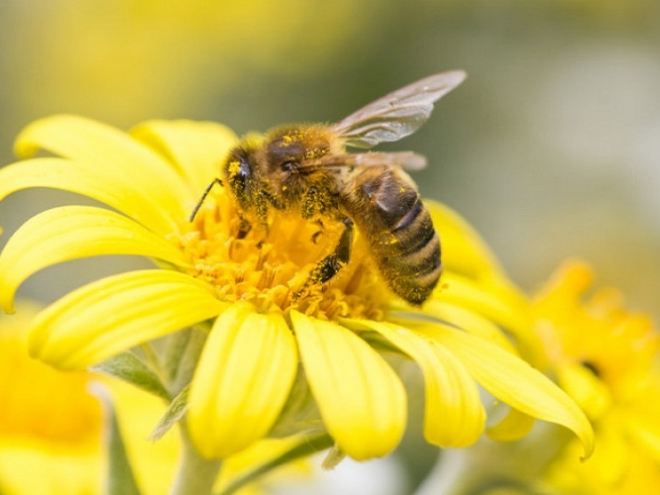Behavioral Neuroscience, lecture on Acetylcholine
Honey Bee Conditioned Drinking
XII. Learning/Conditioning Mechanism
A. Coincidence and Convergence
1. ORN à AL PN à l-APT à LH
a. l-APT à MB KC
b. smiliar via m-APT à LH or MB KC
c. AL PN ACh à nAChR on MB KC
i. nAChR also on LH neurons
2. GRN à VUMmx1 à MB KC
a. GRN à VUMmx1 à AL & LH
b. GRN ACH à nAChR on VUMmx1 à AmOA1 on MB KC
i. VUMmx1 à AmOA1 on LH neurons
3. Simultaneous nACHR and AmOA1 signals potentiate MB KC neurons
a. greater signal, greater current
b. greater current + 2nd messeger action à neural plasticity
c. plasticity à learning
i. ORN + GRN concurrence heightens KC signal à Pe-1
ii. Pe-1 + LH concurrence potentiates signal à SEG motor
iii. requires lack of aversive stimuli
1) lack of GRN "deterent" signaling à AL
2) lack of AL DA signaling à AmD2 MB GABA interneurons
B. Plastic changes Necessary for Learning
occur at the microglomeruli in the MB calyces
1. cAMP is important
a. Produced by rutabaga adenylyl cyclase (rut AC; AC)
i. responds differentially to calcium (Ca++) influx
1) invoked by voltage-gated Ca++ channels (VGCC)
a) opened during ACh-nAChR stimulation
i) nAChR à Nai+ à D Vm à VGCC
ii. and G-protein activation
1) OA à AmOA1 à GPqll à PLC à PIP2 à
à IP3 à Ca++ àrutAC
2) OA à OAR2B à Gs à AC à cAMP
2. acts as coincidence detector for reward
a. OA release (US) paired with ACh release (CS)
b. coordianted activation of cAMP
i. other signals involved
c. Stimulates Protein Kinase A (PKA) activity
i. PKA à pAmCREB à CRE (on DNA)
ii. CREB/CRE à transcription of ubiquitin hydrolase
1) persistent PKA à long-term sensitization
iii. CREB/CRE à transcription of C/EBP
1) transcription of growth-related proteins
a) elongation factor 1a (EF1a)
i) neurite outgrowth
d. new synapses formed
i. stronger KC signal à Pe-1
e. pAmCREB stimulation of CRE promotes memory formation
i. Flower smell + nectar taste = reliable food cue
3. coincidence detector during aversive stimulation
a. GRN "deterent" à AL DA release
i. toxin (quinine) or shock (different RN) (US)
b. paired with AL ACh release
i. from olfactory stimulation (CS)
ii. results in synergistic increases in cAMP
b) during appetitive stimulation (i.e. sugar)
i. DA à PKA activity in MB a-lobe GABA interneurons
1) inhibits ACh-OA synergy at MB KC
2) inhibits stronger positive Pe-1 signal
c. DA stimulation promotes aversive memory
i. AL DA signals à MB KC
1) pAmCREB/CRE promotes these memories
ii. learn to avoid the odor/nectar pair if toxin is present
